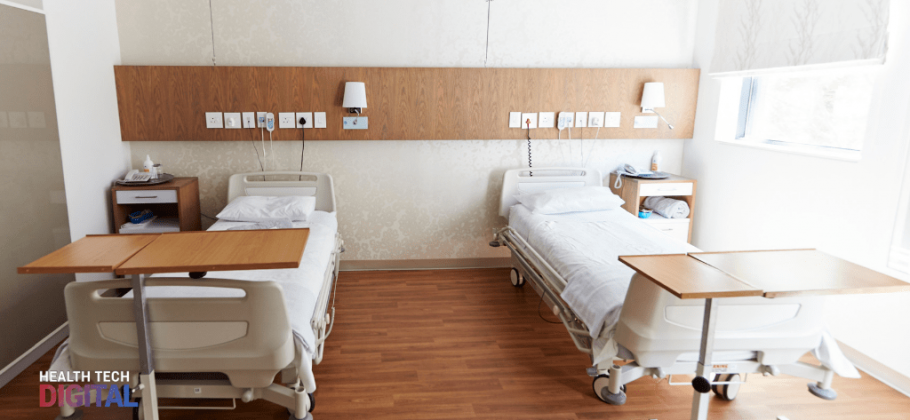The NHS has a problem with bed management; this is nothing new. However, current thinking around the issue is flawed. The problem is not one of bed blocking; it lies in the way patient flow is managed from the point of admission. The fundamental measure of bed utilisation – idle bed time – is not tracked, providing the NHS with no insight into the effectiveness, or lack of it, of bed management processes. Despite the accessibility of new technologies that can automate bed management and drastically reduce idle bed time, Trusts remain reliant on the ability of individual staff – the bed heroes – to save the day.
Fortunately, says Neil Griffiths, Managing Director, TeleTracking UK, the solution is both straightforward, easy and proven to deliver benefit at a scale few imagine.
Misplaced Resources
Every year the NHS opens 3,500-4,000 escalation beds over winter to accommodate additional demand. Every year, NHS Trusts spend between £2 million and £7 million adding capacity. Yet take any performance measure and it is absolutely clear that this approach to bed management is flawed, potentially fatally so.
The 95% target for A&E patients to be seen within four hours has not been met since July 2015; more than 75,000 patients were forced to spend at least half an hour this winter with ambulance crews waiting to be treated by A&E staff. In January, 13 hospital trusts were forced to temporarily send patients to other nearby trusts 35 times.
Yet how would these patients feel if they knew that many of the ostensibly ‘full’ beds were actually lying empty awaiting cleaning and reallocating? Or to discover that the average bed in the NHS is left ‘idle’ between a patient being discharged and a new patient being admitted for six to eight hours, when proven best practice shows that it should be as little as one hour and 45 minutes?
There is no need for these delays. No need for additional temporary wards. There is already enough capacity in the system: better management of bed utilisation would increase capacity by 3,000 hospital beds per day.
Outdated Management
The problem is not bed blocking or inadequate social care provision; the NHS is attempting to manage unprecedented service demand using the same bed management approach that has been in place for over five decades. And the implications extend far beyond A&E delays: poor bed management is proven to result in cancellations of elective surgery; increased mortality; incorrect clinical pathways and therefore extended issues around care in the community; and staff sickness due to raised stress levels.
Today bed management teams have no insight into the number of beds available or where; they rely on periodically roaming the wards in a bid to find a bed. With nurses tasked with bed preparation – a job that will never be prioritised over a patient’s clinical needs – bed turnaround is routinely delayed. Furthermore, with pressure to hit Emergency Department (ED) targets, beds are not allocated by suitability, or appropriateness of care, but on time: the patient closest to breaching the access target or the patient waiting the longest receives the bed. The result is a large number of outliers, patients located in the wrong ward for their clinical needs – a problem that affects both staff morale and long term patient outcomes.
It is the inherent delays at every stage in the bed allocation process that create the annual demand for temporary capacity. Hospitals need to better utilise the existing NHS bed estate but tinkering at the edges of this problem makes little or no difference; what is required is a fundamental shift in bed management – from cleaning to allocation and portering – and complete, real-time visibility of the bed estate. It is a system led approach to transforming bed utilisation that will deliver benefits for both patient and staff welfare as well as bottom line value.
Effective Utilisation
The key is to better understand the process – and that requires both bed visibility and measurement of idle bed time. By tracking patient flow in real-time and automating processes, hospitals can light up the bed estate. With clear and accurate insight into bed availability, hospitals can drive improvements at every stage of the utilisation process and reduce idle bed time.
With the ability to track patients in real-time from A&E through to discharge using, for example, RFID badges, hospitals can transform the way beds are managed. Creating dedicated bed cleaning teams for example, ensures empty beds are immediately prepared for a new patient while also releasing nurses from the burden of bed cleaning to concentrate on core clinical tasks; while porters can be automatically informed when patients are ready for transfer, further reducing idle time.
With complete visibility of both patient demand and available beds, patients can be allocated to the right bed, rather than the first bed, and get there sooner. Reducing outliers in this way provides more patients with better access to the doctors and nurses with the right skills, improving their confidence in the staff. Furthermore, by removing bed cleaning duties, nursing capacity is proven to increase by up to 30% – improving both patient care and staff morale. A better experience, including faster admission, will improve patient well-being, reducing the length of stay, and hence bed demand – as well as the need for social care intervention.
Conclusion
It is too easy for NHS Trusts to blame shortfalls in social care and the resultant bed blocking for the endemic problems of bed management and the knock-on effect on ED performance. Assuming the only option is to open more beds is both short sighted and wasteful. The reality of bed management is far more complex: delays in admission and inadequate bed allocation models measurably contribute to patients’ duration of stay, exacerbating not only the problem within hospitals but actual adding to social care demands.
The benefits of better bed management are significant, affecting not only patients and nurses but also the bottom line. Reducing idle bed time from six hours to less than two, would not only eradicate the need to create temporary wards – saving up to £7 million per Trust per year – but each 600-700 bed hospital could create 60 beds of additional capacity and increase the number of patients treated.
By reducing idle bed time and implementing a care based rather than time based admissions model, hospitals can improve patient outcomes and reduce the end to end demand on services, including social care, as well as avoiding unnecessary cancellations of elective surgery. Better bed management delivers benefits throughout the entire acute care.













